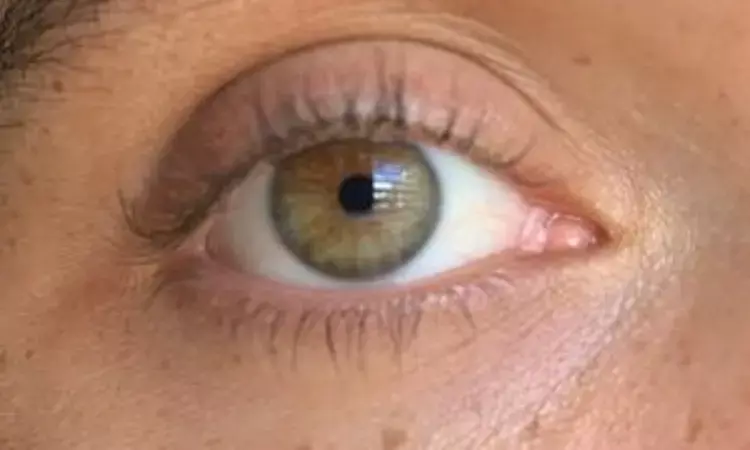- Home
- Medical news & Guidelines
- Anesthesiology
- Cardiology and CTVS
- Critical Care
- Dentistry
- Dermatology
- Diabetes and Endocrinology
- ENT
- Gastroenterology
- Medicine
- Nephrology
- Neurology
- Obstretics-Gynaecology
- Oncology
- Ophthalmology
- Orthopaedics
- Pediatrics-Neonatology
- Psychiatry
- Pulmonology
- Radiology
- Surgery
- Urology
- Laboratory Medicine
- Diet
- Nursing
- Paramedical
- Physiotherapy
- Health news
- Fact Check
- Bone Health Fact Check
- Brain Health Fact Check
- Cancer Related Fact Check
- Child Care Fact Check
- Dental and oral health fact check
- Diabetes and metabolic health fact check
- Diet and Nutrition Fact Check
- Eye and ENT Care Fact Check
- Fitness fact check
- Gut health fact check
- Heart health fact check
- Kidney health fact check
- Medical education fact check
- Men's health fact check
- Respiratory fact check
- Skin and hair care fact check
- Vaccine and Immunization fact check
- Women's health fact check
- AYUSH
- State News
- Andaman and Nicobar Islands
- Andhra Pradesh
- Arunachal Pradesh
- Assam
- Bihar
- Chandigarh
- Chattisgarh
- Dadra and Nagar Haveli
- Daman and Diu
- Delhi
- Goa
- Gujarat
- Haryana
- Himachal Pradesh
- Jammu & Kashmir
- Jharkhand
- Karnataka
- Kerala
- Ladakh
- Lakshadweep
- Madhya Pradesh
- Maharashtra
- Manipur
- Meghalaya
- Mizoram
- Nagaland
- Odisha
- Puducherry
- Punjab
- Rajasthan
- Sikkim
- Tamil Nadu
- Telangana
- Tripura
- Uttar Pradesh
- Uttrakhand
- West Bengal
- Medical Education
- Industry
Low energy FLACS better than phacoemulsification for cataracts, study finds

Singapore: In a new study conducted by Yu-Chi Liu and team it was found that in low-energy femtosecond laser-assisted cataract surgery (FLACS), the long-term endothelial cell count (ECC) outcome was better. Other intraoperative and postoperative results, as well as patient-reported outcomes, were comparable across these two operations. The findings of this study were published in Frontiers in Medicine.
FLACS has been demonstrated to be a safe and successful treatment, and it is rapidly being used in surgical practice. Numerous studies have been undertaken since its launch in 2010 to compare clinical results with those of traditional phacoemulsification. As a result, the goal of this study was to examine the 1-year clinical results, phacoemulsification energy, aqueous profiles, and patient-reported outcomes of low-energy FLACS vs. traditional phacoemulsification.
The study is a paired-eye randomized controlled trial (RCT). In this study, 85 patients were randomly assigned to undergo FLACS (Ziemer LDV Z8) in one eye and traditional phacoemulsification in the other. For one year, clinical data were collected, including phacoemulsification energy parameters (cumulative dissipated energy, phacoemulsification power, and phacoemulsification time), uncorrected and corrected distance visual acuities (UCDVA and BCDVA), manifest refraction spherical equivalent (MRSE), central corneal thickness (CCT), endothelial cell count (ECC), anterior chamber flare, and post-operative complications. Prostaglandin (PGE)2, cytokines, and chemokines concentrations were measured in aqueous humour. An in-house questionnaire was used to assess patients' reported results on surgical experiences.
The findings of this study are:
1. At 3 months and 1 year, the low-energy aided FLACS group exhibited considerably less ECC decrease than the standard phacoemulsification group.
2. Throughout the post-operative year, there were no significant variations in phacoemulsification energy parameters, UCDVA, BCDVA, MRSE, CCT, or the incidence of post-operative problems between the two groups.
3. The two groups' subjective surgical experiences, including operative length and perceived discomfort, were equivalent. FLACS increased aqueous PGE2, interleukin (IL)-6, IL-8, and interferon (IFN) concentrations, as well as anterior chamber flare.
In conclusion, these study findings add to the understanding of FLACS by providing a complete presentation that includes objective clinical assessments, subjective patient-reported outcomes, and laboratory analysis.
Reference:
Liu, Y.-C., Setiawan, M., Chin, J. Y., Wu, B., Ong, H. S., Lamoureux, E., & Mehta, J. S. (2021). Randomized Controlled Trial Comparing 1-Year Outcomes of Low-Energy Femtosecond Laser-Assisted Cataract Surgery versus Conventional Phacoemulsification. In Frontiers in Medicine (Vol. 8). Frontiers Media SA. https://doi.org/10.3389/fmed.2021.811093
Medical Dialogues consists of a team of passionate medical/scientific writers, led by doctors and healthcare researchers. Our team efforts to bring you updated and timely news about the important happenings of the medical and healthcare sector. Our editorial team can be reached at editorial@medicaldialogues.in.
Dr Kamal Kant Kohli-MBBS, DTCD- a chest specialist with more than 30 years of practice and a flair for writing clinical articles, Dr Kamal Kant Kohli joined Medical Dialogues as a Chief Editor of Medical News. Besides writing articles, as an editor, he proofreads and verifies all the medical content published on Medical Dialogues including those coming from journals, studies,medical conferences,guidelines etc. Email: drkohli@medicaldialogues.in. Contact no. 011-43720751


